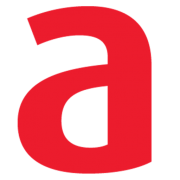The Covid-19 pandemic isn’t the first extraordinary event to impact jobs or the way work gets done. Think of the 2008 financial crisis or the 2017 hurricane season of Harvey, Irma and Maria. While filling open shifts for many employers has been a daily struggle due to Covid-19, the pandemic is only the latest crisis to expose the flaws in a manual system of maintaining minimum staffing levels and keeping up with workload management via white boards, phone calls and email.
For most organizations, workload and workforce management is an inefficient, burdensome process that front-line supervisors and mid-level managers often make work at great cost to themselves and the organization’s bottom line. Companies like Piedmont Airlines see automating workload management as the way to reduce service interruptions, slash hours wasted on recordkeeping, redeploy support staff to critical work and keep shift supervisors focused on ensuring efficiency and safety. With automated resource management, an employer can also reconcile shift management with HR, payroll and learning-management system, LMS, software, while digitally and efficiently tracking all facets of shift work from one platform.
By automating workload management, managers can save time, mitigate risk and reduce operational costs. When a manager or shift supervisor has to spend time on the phone coordinating a shift change or callout, an employer is wasting money. Unplanned absences, especially when a facility is understaffed, force supervisors to scramble to find workers. In a manual process, a supervisor would rifle through a paper list or computer spreadsheet of who’s available with the right skill set and seniority.
The shift bidding process for most employers begins with emails or phone calls and postings on bulletin boards, followed by more phone calls, texts and emails. When bids go wrong, or managers overlook steps, employees can file grievances. To automate bidding, while mirroring work agreements, managers can use ARCOS’s Resource Management solutions.
Does this sound familiar to you? ARCOS can help. With platforms like ARCOS, employers can analyze employee schedules at the moment they change and also see potential shortfalls or overages in staffing minutes, days or months in advance.
This is just scratching the surface of what the ARCOS Resource Management platform can do for you and your bottom line. If you’d like to read more, check out our white paper “Fixing Workload Management During Extraordinary Times” for the full story of how we can help you work smarter and not harder.




